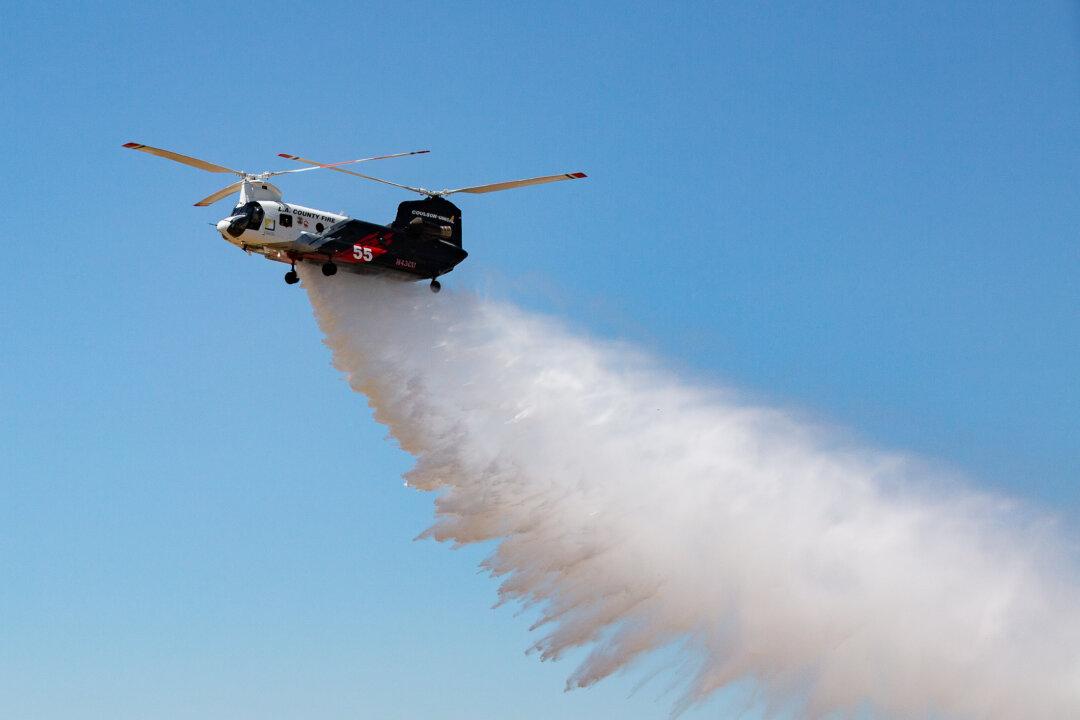Three Southern California counties are joining forces to operate the world’s largest water-dropping helitankers prior to the start of a “bad fire season.”
The cooperative, dubbed “Quick Reaction Force,” was initiated June 15 after Southern California Edison (SCE) donated $18 million to the Orange County Fire Authority (OCFA), Los Angeles County Fire Department (LACoFD), the Ventura County Fire Department, Coulson Aviation, and Perimeter Solutions.





